Prelim 2020 Hurricane Season Forecast 4 years ago
March 10, 2020
- There are many similarities to some notable hyperactive seasons.
- A warm Atlantic Basin is already in place and no El Niño is expected.
- In April we will weight the analogs.
- Our first outlook is for a big season.
Total Storms 14-20
Hurricanes: 7-11
Major Hurricanes: 3-6
ACE: 145-195
WeatherBell has been a pioneer in identifying the areas most susceptible to tropical cyclone impact during the preseason. Last year's forecast showed the area where the ACE (accumulated cyclone energy) would be below normal but did not identify the above normal areas because the signal was quite weak for the first time in three years. So we forecasted a scattershot season, which I think we can agree we had.
For the current year, a higher number of storms and ACE is supported by very warm Atlantic and Gulf SSTs and the fact that many storms we could not see years ago are now seen and named with improved satellite instrumentation. In addition, very warm water near the coasts ups the ante for rapid feedback development. This is how we caught Imelda last year, and it's fortunate the process waited until it was on land.
In April we will try to identify the landfall areas, though here we will show where hurricane hits occurred in the analog years to give an idea. The danger of the current idea is the same kind of thing that thwarted the winter forecast (making a forecast off a forecast), but the forecasted SSTs are in line with hyperactive seasons.
CFSv2 SST forecast:
.gif)
The hyperactive seasons of 1995, 1996, 1998, 1999, 2003, 2004 and 2005 had the warmer SSTs in the tropical Atlantic with the cooler (less warm) waters off the Southeast Coast.
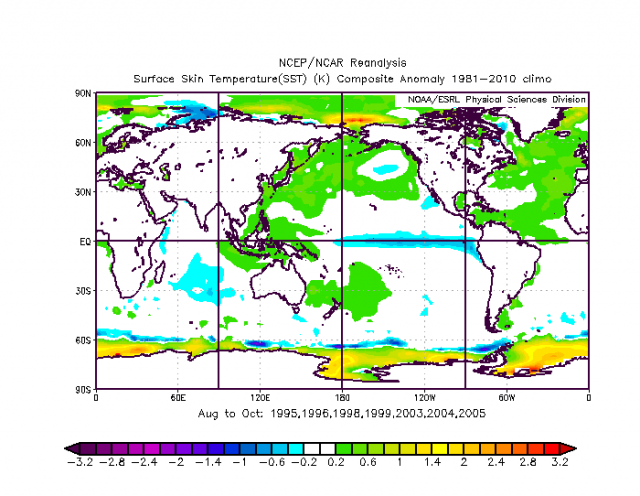
The 2010 and 2017 hyperactive seasons:
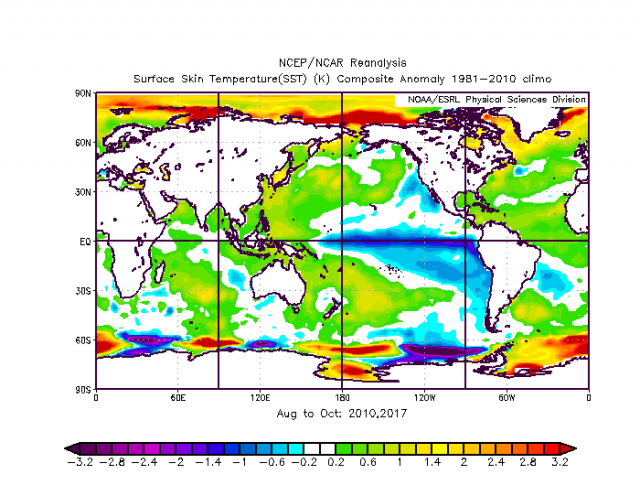
These were more like what we are seeing now, with more widespread warmth. There are also some similarities to 2007 and 2013, which wound up with near to below normal activity.
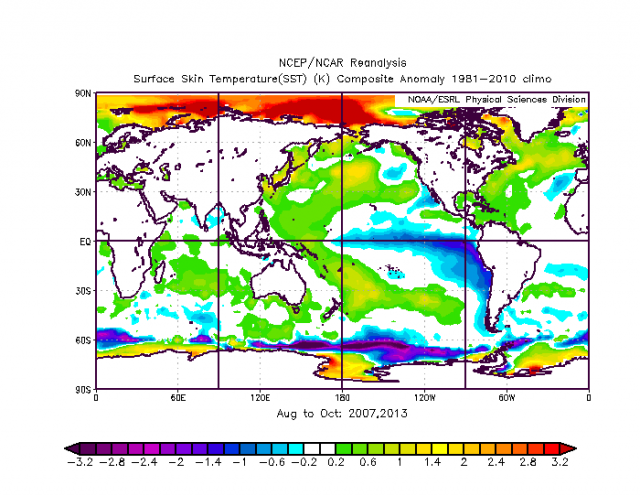
In fact, an argument can be made that those years could be the closest to the SST forecast. Also arguing for less activity is the Euro's Sea Level Pressure forecast. That has higher pressure near the Azores, increasing the easterlies to the south, which can be negative for development if too strong. However, there may be something amiss here with the model. The low pressure in the western Indian Ocean argues for more upward motion there:
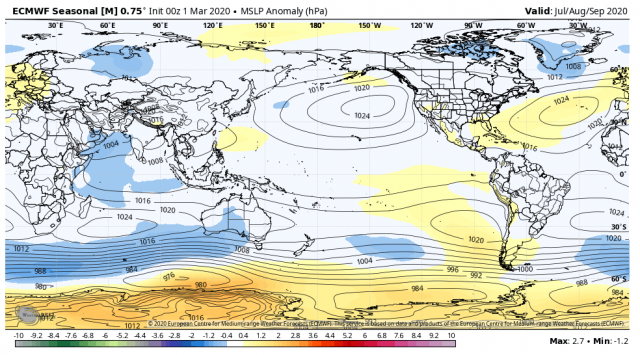
The precipitation pattern looks a lot like MJO Phases 2-4. While Phase 4 is a down phase, Phases 2 & 3 are very active. Notice again the dry area in the hurricane alley in the Atlantic:
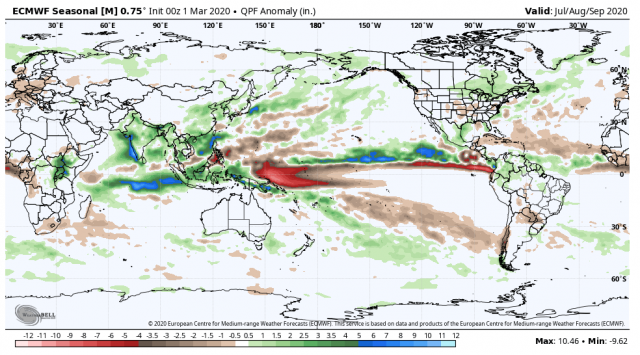
The problem is the Euro has not forecasted an above normal season in years. It's always below average, perhaps because the model cannot see all the "ham sandwiches" (as I call the weak storms away from land) that are getting named.
The implication here is that long-tracked systems may be slow to develop until they get farther to the west. Certainly the JMA upward motion chart for the summer season shows that:
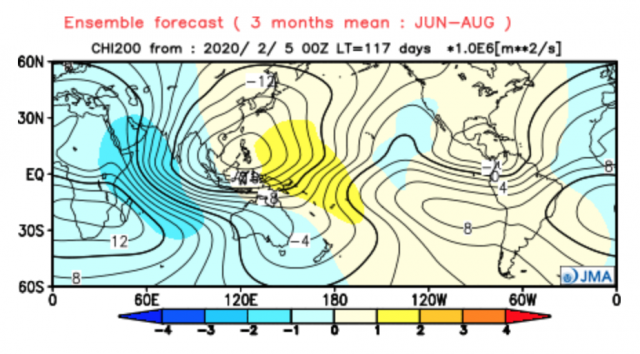
It matches the upward motion for those more favorable phases of the MJO:
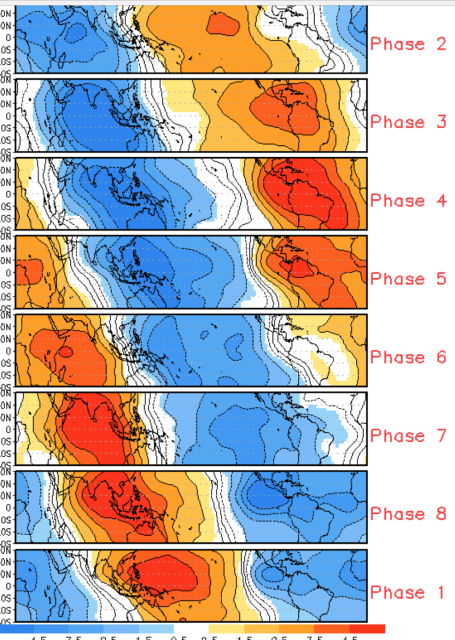
Vitart, et al. showed the development in the different phase (brown areas are above average):
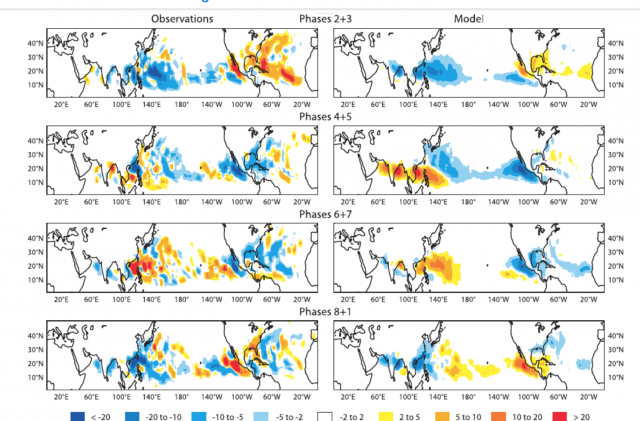
So the analog years we are looking at are:
| Year | ACE | Named Storms | Hurricanes | Intense Hurricanes |
| 1995 | 227 | 19 | 11 | 5 |
| 1996 | 166 | 13 | 9 | 6 |
| 1998 | 182 | 14 | 10 | 3 |
| 1999 | 177 | 12 | 8 | 5 |
| 2003 | 177 | 16 | 7 | 3 |
| 2004 | 227 | 15 | 9 | 6 |
| 2005 | 250 | 28 | 15 | 7 |
| 2007 | 74 | 15 | 6 | 2 |
| 2010 | 165 | 19 | 12 | 5 |
| 2013 | 36 | 14 | 2 | 0 |
| 2017 | 225 | 17 | 10 | 6 |
| Average | 173 | 16.5 | 9 | 4.4 |
Landfall chart of hurricanes and intensity in these years:
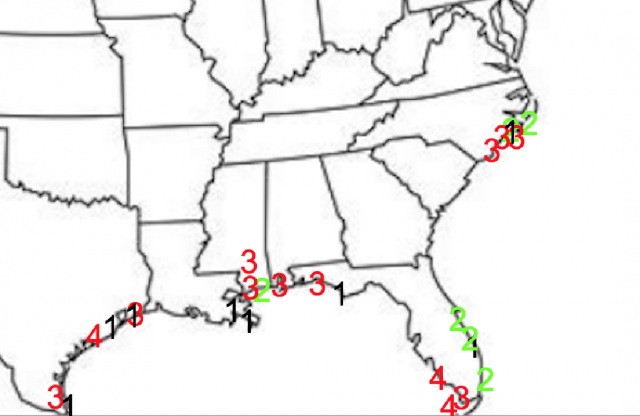
About 25 hurricanes hit the U.S. in the analog years with about half of them being major storms. So 2-3 landfalling hurricanes, with 1 or 2 being major hurricanes is the current idea. There are four areas that were targeted in the analog years: Texas, the central Gulf Coast, southern Florida, and the North Carolina Outer Banks. None in these years broke out of the pack and hit New England, and you have to wonder how long that can be the case, though we did have a weakened Irene and Sandy in non-analog years.
The Verdict
The danger of making a forecast off of a forecast is there, along with the possibility of a year where next to nothing happens despite great similarities to the hyperactive years. For now, we have high totals because of the similarities to the hyperactive years. In April we will start weighting these years, some stronger than others, to get a clearer picture.
With the warm Atlantic Basin SSTs already in place, no El Niño, and an upward motion forecast that looks like a favorable MJO pattern for the hurricane season, this first "vision" of 2020 is for a big season. We can have big seasons like 2010, where next to nothing hit land, but chances are staying in the middle like we are doing would serve us well.